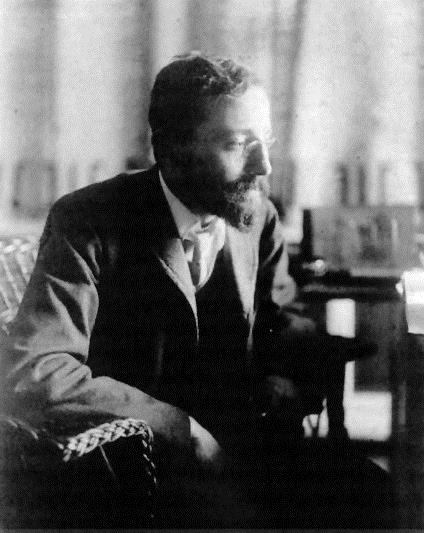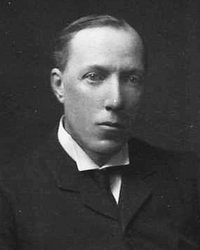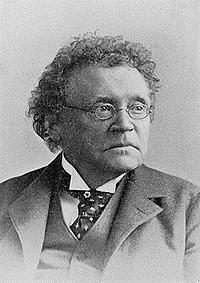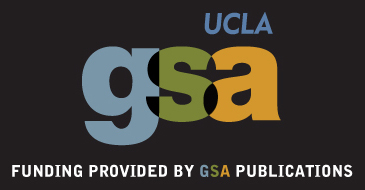Reconsidering "The Date" in European Folk Music Research

How are the inception dates of oral music traditions derived? The question seems simple, but a survey of contemporary and past publications suggests that an answer might be difficult to come by. I recently endeavored to undertake this survey, primarily on the European music scholarship of oral music traditions, to learn what methods have been employed to determine their beginning dates.
Because of the breadth of subject matter under study in European historical ethnomusicological research, there is no one systematic approach to dating musical characteristics; rather, a pastiche of approaches are used to approximate beginning dates for musical styles. Below is a table with the literature I surveyed in this cursory study:
Child, Francis James. 1884 [2003]. The English and Scottish Popular Ballads In Five Volumes, Volume I. New York: Dover Publications.
Elschek, Oszkár. 1964 (1965). “Problem of Variation in 18th Century Slovak Folk Music Manuscripts.” Studia Musicologica Academiae Scientiarum Hungaricae, 47-59.
Hoerburger, Felix. 1964 (1965). “Dance and Dance Music of the 16th Century and Their Relations to Folk Dance and Folk Music.” Studia Musicologica Academiae Scientiarum Hungaricae. 79-83.
Hornbostel, Erich Moritz von. 1904 [1975]. “On the Significance of the Phonograph for Comparative Musicology.” E.M. von Hornbostel Opera Omnia I. The Hague: Martinus Nijhoff, 92-113.
Hornbostel, Erich Moritz von and Curt Sachs. 1914 [1961]. “Classification of Musical Instruments.” Galpin Society 14: 3-29.
Keeling, Richard. 2012. “Animal Impersonation Songs as an Ancient Musical System in North America, Northeast Asia, and Artic Europe.” Ethnomusicology 56(2): 234-265.
Ling, Jan. 1997. A History of European Folk Music. Rochester, New York: University of Rochester Press.
List, George. 1979. “The Distribution of Melodic Formula: Diffusion or Polygenesis?” Yearbook of the International Folk Music Council 10:33-52.
Lloyd, Albert L. 1944. The Singing Englishman. London: Workers Music Association Ltd.
Nettel, Reginald. 1956. Seven Centuries of Popular Song: A Social History of Urban Ditties. London: Phoenix House Ltd.
Nielsen, Svend. 2000. “Denmark.” in The Garland Encyclopedia of Music, Volume 8: 519-522. New York: Routledge.
Rice, Tim. 2000. “The Music of Europe: Unity and Diversity” in The Garland Encyclopedia of Music, Volume 8: 453-460. New York: Routledge.
Schneider, Albrecht. 2000. “Archaeology of Music in Europe” in The Garland Encyclopedia of Music, Volume 8: 34-45.
Schneider, Marius. 1957. “Primitive Music.” Oxford History of Music. 1:1-82.
Sharp, Cecil J. 1907 [1936]. English Folk-Song: Some Conclusions. London: The Wessex Press, Second Edition.
Wiora, Walter. 1964. “German Spiritual Folk Song: Comparative Methods in a Historical Study." Ethnomusicology 8(1): 1-13.
In my survey, I found two different ways dates have been conceptualized in early music research: One provided dates as specific pinpoints, and attempted to align music with dated historical developments. Another form of dating used metaphorical “strata,” meaning historical layers of musical traditions. In this form, dates were less important than the larger chronology. Studies that contented themselves with locating approximate boundaries of temporal musical strata generally seemed more reliable than studies attempting to assign concrete years, particularly when addressing older subject matter.
I frequently encountered dates with no explanation of how they were determined. As I was interested in discovering the underlying basis for the date, I found this incredibly frustrating. I did not necessarily doubt the dates proposed by the authors, but I had expected the process of arriving at a date or range of dates to be laid out methodically.
Still, the literature suggests that eight prevalent methods that have been used in the dating or “stratification” of musical traditions. Some of them are now discredited, including ideas of kulturkreis and diffusionism, but several of the other methods I found have thus far not received direct evaluation of their strengths and weaknesses. This is unfortunate, since many of them offer potentially creative solutions for determining approximate ages of musical characteristics. Below are brief descriptions of these eight methods I found and examples of authors that employ them.
1. Kulturkreis and Diffusionism bases itself on the evolutionary concept popular in the early twentieth-century that all music shares a common origin. It was believed that this shared musical origin could be found through the study of the distribution of musical characteristics cross-culturally, although this was widely rejected by the middle of the twentieth-century.

Scholars utilizing this method | Examples |
Schneider Sachs/Hornbostel | (Schneider 1957) (Hornbostel and Sachs 1914) |
2. Modality has been used to delineate between historical periods based on the principle that popular modes can change with historical strata. An example is Svend Nielsen’s observation of a shift from the minor to the major mode in Danish folksongs between the eighteenth and nineteenth century (2000:453).
Scholars utilizing this method | Examples |
Elschek Nielsen Sharp | (Elschek 1964: 53) (Nielsen 2000: 453) (Sharp 1907: 57) |
3. The subject matter of texts provides clues when songs reference specific dates and known historical events. Examples include the “Agincourt Carol” and ballads recounting battles such as “Rising in the North.” This is a popular dating method, although it is important to remember that songs commemorating events may be written substantially later than the event they recall.

Scholars utilizing this method | Examples |
Lloyd Sharp Wiora | (Wiora 1964: 4-5) (Sharp 1907: 94-95) (Lloyd 1944: 38, 42) |
Cecil Sharp
4. Range has also been used to argue for the age of ballads. It has been proposed that smaller ranges are characteristic of older ballad melodies and larger ranges are more characteristic newer melodies (Nielsen 2000: 453; Rice 2000: 9).
Scholars utilizing this method | Examples |
Rice Nielsen | (Rice 2000: 9) (Nielsen 2000: 453) |
5. The comparison of oral traditions to art music examines the overlap between the known chronology of the Western “art music” traditions and concurrent developments in orally transmitted music. George List pointed out in his article “The Distribution of Melodic Formula: Diffusion or Polygenesis?” the extent of fluidity that likely existed between these two music traditions, and how this knowledge can be used to answer questions about both traditions (1979: 49).
Scholars utilizing this method | Examples |
Hoerburger Wiora List | (Hoerburger 1965: 80-82) (Wiora 1964: 1) (List 1979: 49) |
6. The structures of melodies are used to find the characteristic accents, shape, length, and harmonic structure of melodies and subsequently determine the archetypal traits of historical periods. This technique has been used in regionally confined attempts at tracing the movement of early melodies, such as Elschek’s study of Slovak folk songs (1964).
Scholars utilizing this method | Examples |
Elschek List Wiora | (Elschek 1964: 52) (List 1979: 50) (Wiora 1964: 6,10) |
7. The Age-area hypothesis draws on the basic age-distribution principle used by diffusionists, but takes geography into account and does not ascribe to the evolutionary idea of one global origin for music. When used cautiously and with culturally informed specificity, it appears that it does have the potential to be informative. An example is Keeling’s recent use of this method in his geographically informed study of animal impersonation songs among indigenous populations (2012).
Scholars utilizing this method | Examples |
Keeling | (Keeling 2012: 234) |
8. Manuscript studies utilize written music and compare its characteristics with oral traditions. This method is predominantly applicable in European music scholarship because of the number of extant musical manuscripts available for study.

Scholars utilizing this method | Examples |
Francis James Child | (Child 1884-1898) |
Francis James Child
Of these eight methods I researched, the strongest arguments for historical strata or dates drew on a combination of manuscripts, texts, and similarities of oral traditions to datable art music, with the possible addition of another experimental method. Dating techniques using modality, range, and melody structure might be promising in specific circumstances, such as the use of range in determining approximate ages of ballads, but their applicability seems limited to a few specific cases. Nothing I found in my cursory survey refuted the dating methods of modality, melody structure or range, but that appeared to be a result of a larger gap in the discussion of dating methodologies. Is this lack of problematization to be taken as tacit vindication of these methods, or as an unexplored gap in historical methodology?
The relationship of these dating methods with nationalism and locality is also intriguing: the same techniques used to define geographic musical boundaries, such as modality, are also employed in defining historical periods. This is not surprising, since several of the early European scholars who performed historical research---including Cecil Sharp and Albert Lloyd---were also operating under nationalist premises that included defining the self and the “other.” Musically, these divisions appear both temporally and spatially. Revisiting the material and motivations of these early twentieth-century scholars serves as a reminder that dates, nationalism, and history are intimately linked. Dates can propagate nationalist narratives and it is easy to unwittingly cite a date from this early literature without realizing its premise is flawed.
This study left me contemplating the scholarship of dates and chronology. In particular, I was left pondering the resonating effects of the historical research performed by these early European nationalists as well as the continuing question of what dates are significant—meaning accurate and reliable enough to be of use. Even prominent scholars like Cecil Sharp were aware of the limitations on their historical research during the booming period of nationalist historical research in the early twentieth-century:
Our inability to ascribe a great age to the folk-song will come as a disappointment to those who attach value to a song in proportion to its antiquity. Age and beauty do not necessarily go together with tunes, any more than they do with human beings.
After all, we can but reiterate that the value of the folk-song lies in its own intrinsic qualities. If it is beautiful, it needs nothing to recommend it. And if it is not beautiful, declaring it to be as old as Moses will not make it so. (Sharp 1907: 126)
As Sharp poignantly indicates, the search for history can easily become misguided when too many variables are missing to make accurate determinations. Sometimes music must be accepted at face value until new information comes to light. Perhaps with more research on methodology it will be possible to dig deeper into the layers of these currently unknown musical histories.
----
Kristina Nielsen is a PhD student in ethnomusicology at UCLA, and the editor of the Sounding Board's Historical Perspectives section.





